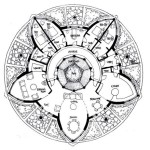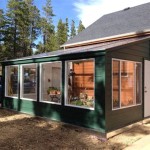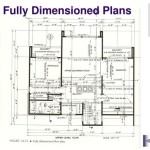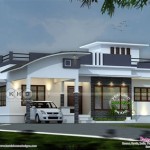Small Greenhouse Interior Plans: Optimizing Space and Functionality
Small greenhouses offer an accessible entry point into the world of controlled environment agriculture, allowing individuals to cultivate plants year-round regardless of external weather conditions. However, the limited square footage necessitates careful planning of the interior to maximize space utilization, ensure optimal plant growth, and facilitate efficient maintenance. Developing robust small greenhouse interior plans involves considering several key factors, including plant selection, layout design, environmental control mechanisms, and storage solutions. This article provides a comprehensive overview of essential considerations for effective small greenhouse interior planning.
Planning for Plant Selection and Spatial Requirements
The plants cultivated within a small greenhouse fundamentally dictate the interior layout. Prior to designing the physical structure, a comprehensive inventory of desired plants, including their mature size, light requirements, and watering needs, must be compiled. Different plant species exhibit varying growth habits; vining plants such as tomatoes or cucumbers require vertical support systems, whereas leafy greens like lettuce and spinach thrive in shallow containers. Understanding these distinct requirements allows for the creation of a tailored interior environment that caters specifically to the chosen crops. Consider the mature height and width of each plant to avoid overcrowding, which can restrict airflow, increase humidity, and promote disease.
The number of plants intended for cultivation also influences the space allocation. A single hobbyist may require only a few shelves for herbs and seedlings, while a more ambitious gardener aiming for self-sufficiency might need a more elaborate system with multiple tiers and dedicated propagation areas. Accurately estimating plant density ensures that the internal space is efficiently utilized and plants are adequately spaced. Overcrowding diminishes light penetration and increases the risk of fungal diseases due to poor ventilation.
Furthermore, consider the specific environmental needs of the chosen plants. Some plants require high humidity levels, while others prefer drier conditions. Grouping plants with similar needs streamlines environmental control and minimizes the risk of creating unfavorable conditions for certain species. This may necessitate partitioning the greenhouse into distinct zones, each with customized temperature and humidity settings. Proper planning in this area ensures the long-term health and productivity of the plants.
Maximizing Space with Functional Layout Designs
The layout of a small greenhouse determines the ease of movement, the efficiency of plant care, and the overall aesthetic appeal of the structure. Several efficient layout designs cater specifically to small spaces, each offering unique advantages and disadvantages. Maximizing vertical space is a critical consideration in small greenhouses. Shelving units, tiered benches, and hanging baskets effectively increase the growing area without expanding the greenhouse's footprint. Multiple levels can accommodate different plant types, optimizing light exposure for each. Staggering shelves also maximizes light penetration to lower levels.
Consider the implementation of movable structures. Rolling benches or tiered carts can be easily repositioned to accommodate different plant sizes or to create temporary pathways for maintenance. These movable elements provide flexibility, allowing the interior to adapt to changing needs throughout the growing season. Furthermore, incorporating fold-down tables or work surfaces provides temporary space for potting and transplanting activities, which can be stowed away when not in use, freeing up valuable floor space. Strategic placement of these elements optimizes workflow and ensures a comfortable working environment.
Central pathways are essential for accessibility and maintenance. A narrow but clear pathway allows for easy movement throughout the greenhouse, facilitating watering, pruning, and harvesting tasks. The width of the pathway should be sufficient to accommodate a wheelbarrow or cart for transporting supplies and removing debris. The pathway material should be durable, slip-resistant, and easy to clean. Gravel, paving stones, or even recycled plastic decking can provide a suitable surface that is both practical and aesthetically pleasing. Integrating a well-defined pathway ensures efficient management of the greenhouse environment and minimizes the risk of accidental damage to plants.
Implementing Environmental Control and Support Systems
Maintaining a consistent and optimal environment within a small greenhouse requires the implementation of appropriate control systems. Temperature regulation is critical, and a combination of heating and cooling systems is often necessary to counteract temperature fluctuations. Small electric heaters or propane heaters can provide supplemental heat during colder months, while ventilation fans and shade cloths can help to cool the greenhouse during warmer periods. Thermostatically controlled systems automate these processes, ensuring a stable temperature range without constant manual adjustments. Consider also incorporating thermal mass elements, such as water-filled containers or dark-colored walls, which can absorb and release heat, moderating temperature swings.
Humidity control is another crucial factor. Inadequate ventilation can lead to high humidity levels, fostering fungal diseases and hindering plant growth. Ventilation fans, particularly those equipped with timers, can maintain adequate airflow. Humidifiers can be used to increase humidity levels when necessary, especially for plants that require a moist environment. Regularly monitoring humidity levels with a hygrometer is essential for making informed adjustments to the ventilation and humidification systems.
Lighting is often a limiting factor in small greenhouses, especially during winter months. Supplemental lighting, such as LED grow lights or fluorescent lamps, can provide the necessary light intensity and spectrum for optimal plant growth. LED lights are energy-efficient and produce minimal heat, making them an ideal choice for small enclosed spaces. The placement of supplemental lights should be carefully considered, ensuring even distribution of light across the plant canopy. Regularly cleaning the lights to remove dust and debris maximizes their efficiency and prolongs their lifespan. The duration of light exposure can be controlled using timers, mimicking natural day-night cycles and promoting healthy plant development.
Organizing Storage and Workspaces Efficiently
Efficient storage solutions are crucial for maintaining a clutter-free and organized greenhouse environment. The limited space necessitates creative storage solutions that minimize clutter and maximize functionality. Wall-mounted shelves, pegboards, and hanging racks can be used to store tools, fertilizers, and other gardening supplies. Utilizing vertical space for storage keeps the floor clear and facilitates easy access to frequently used items. Ensure that storage units are durable, weather-resistant, and capable of withstanding the humid environment of the greenhouse. Clear labeling of storage containers enhances organization and simplifies the process of locating specific items.
Consider incorporating a dedicated workspace for potting, transplanting, and other horticultural tasks. A small, sturdy table with a waterproof surface provides a convenient area for repotting plants and preparing seedlings. Incorporating a sink with running water simplifies watering and cleanup activities. A compost bin or worm farm can be integrated into the workspace, allowing for the recycling of organic waste and the production of valuable soil amendments. The placement of the workspace should be strategically chosen to optimize workflow and minimize disruption to the growing area.
Water conservation is an important consideration in small greenhouse management. Implementing a rainwater harvesting system can provide a sustainable source of water for irrigation. Rainwater can be collected from the greenhouse roof and stored in a tank or cistern. Installing a drip irrigation system minimizes water waste and delivers water directly to the plant roots, reducing the risk of fungal diseases. Regularly monitoring water usage and optimizing irrigation schedules can significantly reduce water consumption and lower operational costs. Integrating these water conservation measures promotes environmental sustainability and ensures the long-term viability of the small greenhouse.

Fabmodula Plan Your Greenhouse Interiors

6 X 12 Greenhouse Plans Version Backyard Garden Design Home

15 Greenhouse Ideas To Complete Your Dream Garden

10 Clever Ways To Organise A Greenhouse Waltons

Small Greenhouse Ideas In The Garden And Yard 63 Great For Those Who Love Early Vegetables Flowers My Desired Home Backyard Gardening

Soil Sink Potting Bench Garden Greenhouse Plan Design Ideas

Attached Greenhouse Pros And Cons

30 Beautiful Backyard Garden Design With Small Greenhouse Ideas Freshouz Home Architecture Decor Diy Plans Gardening

Greenhouses In The Desert Are They Useful

Small Gable Roof Greenhouse Plans Spruc D Market








